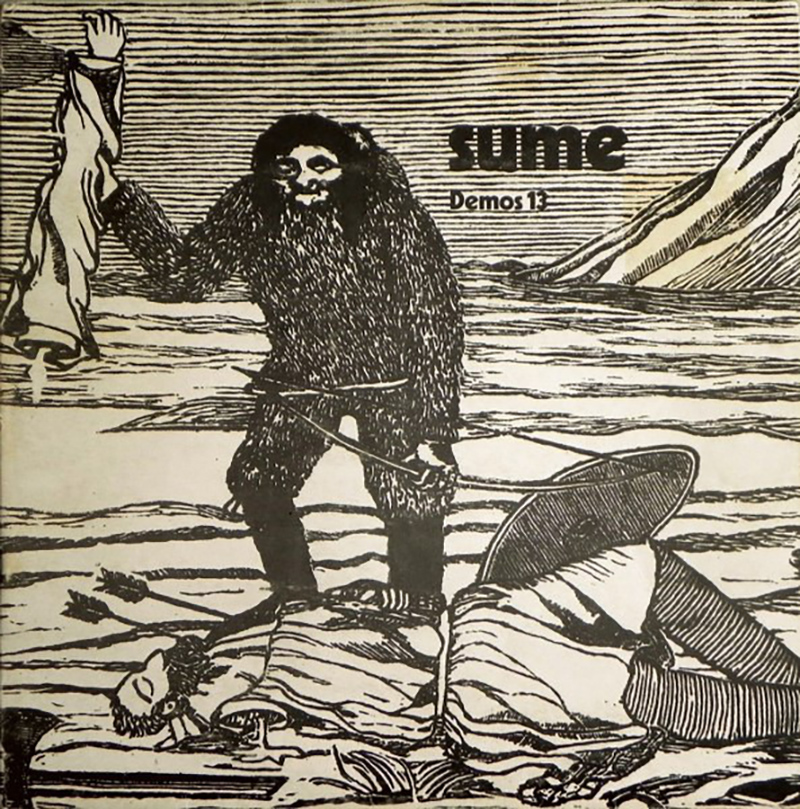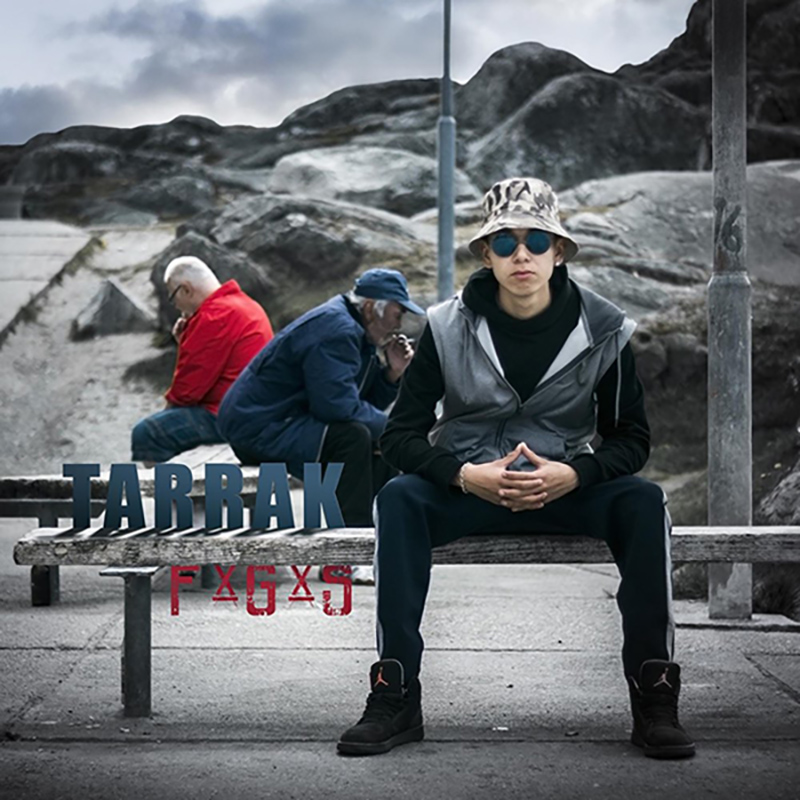Explore Arctic Music: Part IV
By Michael Quigley
Sumé’s debut 1973 album Sumut. The album’s cover art features an 1860 woodcut by Aron of Kangeq depicting the legendary Greenlander Qasapi triumphantly wielding the severed arm of the slain Norseman Uunngortoq.
“Piffiit Nutaat,” the opening track on the first ever Kalaallisut [Greenlandic-language] rock album, begins with a heavy, driving drumbeat as the lyrics describe the uneasy feeling of standing on the edge of a mountain, unable to move, sliding downwards. The song’s narrator awakens from a dream to realize that his homeland has been occupied and his people oppressed for the past 250 years.
This dystopian vision begins the revolutionary rock band Sumé’s debut 1973 album, Sumut [Where To?], and sets the tone for the group’s short but explosive career. For us non-Kalaallisut speakers, the album’s cover art dispels any ambiguity about this band’s message: the time has come for Greenlanders to reclaim their indigenous heritage and rebel against their colonial oppressors.
Sumé [Where?] was formed by a group of politically motivated students from various parts of Greenland who attended college together in Denmark in the early 1970s. They released two more albums before disbanding in 1977, all the while striving to create a nationalist sense of place and political urgency in their lyrics, instrumentation, album art, and interviews. In nearly every song and public statement, Sumé aimed to inspire Greenlanders to cast off what the band felt was an exploitative and stifling Danish colonial occupation of their homeland.
You can sample most of the band’s music by searching Google or YouTube, including the song “Piffiit Nutaat” that we featured in the exhibit A Resounding Beat: Music in the Inuit World. If you like what you hear, support the Greenlandic music industry by purchasing Sumé’s CDs here.
For a more in-depth look at the band and the political environment of 1970s Greenland, check out the fantastic 2014 documentary Sumé: The Sound of a Revolution. You can rent a streaming version or purchase the DVD or CD soundtrack here.
Thanks to Sumé and other political activists, during the late twentieth and early twenty-first centuries, Greenlanders have incrementally won increasing autonomy from the Kingdom of Denmark. However, for many, these changes have not come fast enough or gone far enough in achieving the ultimate goals of political, cultural, and economic independence.

Tarrak’s debut 2016 album FxGxS.
Josef Tarrak-Petrussen is part of a younger generation of Greenlanders impatient with what they see as slow and superficial change. The rapper’s 2016 single “Tupilak,” from his debut album, is an indictment of systemic racism and the obstinate colonial attitude which is still wide-spread in Greenlandic society. The song’s provocative video (thankfully subtitled for us Qallunaat) features the artist rapping in front of a statue of the 18th century Danish-Norwegian colonialist missionary Hans Egede, that looms over the capital of Nuuk.
The 21-year-old has since released a second album, toured internationally, won multiple awards, and founded a video production company. His 2016 music video garnered renewed attention after the murder of George Floyd by the Minneapolis Police Department ignited world-wide protests against police brutality, systemic racism, and colonialism last month. The Hans Egede statue in Tarrak’s video has since been spray painted by protesters and now its fate is the subject of heated debate in Greenland. Meanwhile, Tarrak’s music, which you can easily find on Apple Music, Spotify, or most other streaming platforms, serves, like Sumé’s did for a previous generation, as a rallying cry for discontented Greenlandic youth.
The styles of politically motivated Greenlandic musicians may have changed over the years, but the message remains loud and clear: decolonize.